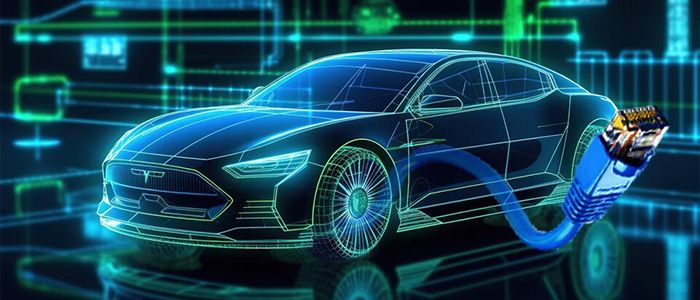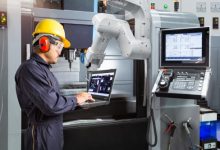
Key Takeaways:
- As the automotive industry moves towards increased connectivity, the importance of cybersecurity grows.
- Emerging technologies provide new tools for enhancing vehicle cybersecurity and introducing new threat vectors.
- Regulatory compliance and technological innovation are forming a new foundation for automotive cybersecurity.
- Consumer awareness and education are pivotal to adopting cybersecurity best practices in-vehicle use.
Introduction
The marriage between the automotive sector and modern information technology has birthed a new offspring: connected vehicles. These sophisticated machines simplify travel and pave the way for integration into larger transportation ecosystems. This technological leap, represented by industry leaders, harmonizes efficiency with dynamic features and convenience. On the grounds of national security concerns, China has tightened regulations over the last years regarding how its companies store and transfer user data. However, with great innovation comes a surge of cybersecurity threats, introducing risks that can undermine the sanctity of personal safety and proprietary data. Addressing these threats is no longer optional but a quintessential element that demands upgraded cybersecurity protocols from Fortinet China to preserve the integrity and trust in modern automotive systems in the country.
The Landscape of Automotive Cyber Threats
Modern vehicles are an attractive target for cybercriminals due to their complex network systems and connectivity to external networks. The threats range from unauthorized access to vehicle systems, leading to unsafe driving conditions, to the compromise of personal data embedded within the car’s digital framework. Such vulnerabilities underscore the critical nature of cybersecurity as an integral part of automotive design. A detailed examination of the cyber threat landscape, as outlined in an article, reveals the necessity for auto manufacturers to establish rigorous security measures that shield their products and clientele. Learning from previous incidents and breaches propels the industry to understand the evolving cyber threat environment maturely.
Technological Advancements in Vehicle Cybersecurity
As automotive cybersecurity threats become increasingly sophisticated, the industry responds by leveraging cutting-edge technology to fortify its defenses. Innovations such as intrusion detection and prevention systems, secure boot mechanisms, and hardware-based isolation of sensitive functions are transforming the cybersecurity landscape within vehicular environments. Real-time data analytics and threat intelligence are now driving the development of proactive defenses, contributing to a holistic approach to vehicle security.
Standards and Regulations Shaping Cybersecurity in Vehicles
The onset of digital threats within the automotive sector has instigated action by regulatory organizations to devise a series of comprehensive standards. These standards are not mere suggestions but mandates designed to ensure vehicle manufacturers adhere to stringent cybersecurity protocols. Regulatory entities across the globe have begun to unite, forging international standards that serve as a common language in the quest to solidify automotive cybersecurity practices. This regulatory push accelerates the innovation of cybersecurity measures, fostering an environment where best practices are shared and collaborative defense strategies are refined and implemented industry-wide.
The Human Element in Vehicle Cybersecurity
Technology alone isn’t the panacea for the cybercrime that targets the automotive industry. The human element plays a pivotal role, as it encompasses the expertise of cybersecurity professionals, the attentiveness of automotive staff, and the awareness of vehicle users. Investing in comprehensive training programs for industry personnel is paramount to ensure that the human component within this ecosystem does not become the weakest link. Moreover, educating consumers on cybersecurity best practices empowers them to be proactive stewards of their digital safety, leading to a more secure interplay between man and machine.
Emerging Threats and Future Challenges
The automotive industry is not static; it evolves with each technological advancement, each shift in consumer behavior, and each newly discovered cyber vulnerability. Anticipating the cybersecurity challenges associated with next-generation automotive technologies is akin to preparing for a constantly changing adversary. Topics such as the role of self-driving cars, the proliferation of vehicle-to-infrastructure communication, and the integration of user personalization features into car systems herald exciting yet daunting cybersecurity challenges. Advanced artificial intelligence (AI) with predictive and adaptive algorithms will be incorporated into car defense systems in the future to keep up with evolving cyber threats.
The Economic Aspect: Cost and Investments in Cybersecurity
The economic implications of integrating cybersecurity into automotive design and manufacturing are two-fold. On one side, the direct costs must be managed — including employing skilled cybersecurity professionals, adopting advanced software and hardware solutions, and ongoing maintenance and updates. On the other side, the cost of inadequate protection could run into the crippling expenses associated with resolving cyber attacks, recalling compromised vehicles, and managing the impact on brand reputation. An informed analysis of these costs, contrasted with the investment in proactive cybersecurity, yields a convincing case for allocating resources toward comprehensive digital protection.
Consumer Awareness and Education
Safeguarding cybersecurity in the automotive realm is not solely the responsibility of manufacturers and regulatory bodies. It is also critically dependent on the informed participation of consumers — the end users of these technological marvels. Automotive manufacturers and cybersecurity experts have the opportunity, and arguably the duty, to educate car buyers about the significance of cybersecurity within their vehicles. Such educational endeavors, ranging from user manuals to interactive digital campaigns, ought to be designed to resonate with the layperson, equipping them with the knowledge and tools to maintain their digital security while enjoying the benefits of connected driving.
Conclusion
Ultimately, the march towards an ever-connected fleet of smart vehicles continues accelerating. At the heart of this progression lies the need for robust, innovative cybersecurity measures exemplified by forward-thinking entities. The quest for cybersecurity in the automotive industry is an ongoing journey that traverses technology, regulation, and human behavior. Through the symbiosis of regulatory compliance, consumer education, and the relentless pursuit of technological enhancement, we forge towards safer roads and secure data highways, protecting both our physical journeys and digital identities.





